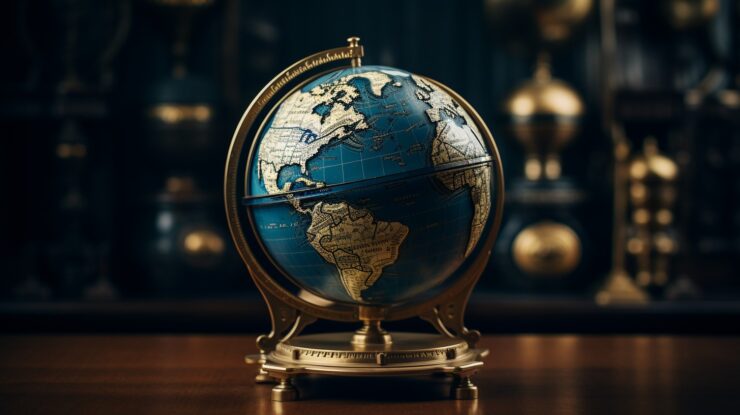For an intriguing journey into geography, did you know about the vastness of some countries? While Russia takes the crown as the largest, the rest of the top 10 might astonish you.
In this piece, I’ll delve into the world’s most expansive nations, both in terms of landmass and population. Alongside, I’ll sprinkle in some captivating tidbits about each one.
Being an avid globetrotter, I find this topic fascinating. Not only am I on a quest to explore many of these vast terrains, but I also hail from one of the colossal nations – the United States.
So, let’s embark on this exploration of the world’s grandest countries!
Size: Largest Countries In The World
| Rank | Country | Land Area (km²) |
|---|---|---|
| 1 | Russia | 17,098,242 |
| 2 | Canada | 9,984,670 |
| 3 | United States | 9,833,520 |
| 4 | China | 9,706,961 |
| 5 | Brazil | 8,515,767 |
| 6 | Australia | 7,692,024 |
| 7 | India | 3,287,590 |
| 8 | Argentina | 2,780,400 |
| 9 | Kazakhstan | 2,724,900 |
| 10 | Algeria | 2,381,741 |
| 11 | Democratic Republic of the Congo | 2,344,858 |
| 12 | Saudi Arabia | 2,149,690 |
| 13 | Mexico | 1,964,375 |
| 14 | Indonesia | 1,904,569 |
| 15 | Sudan | 1,861,484 |
15. Sudan – 1,861,484 km²
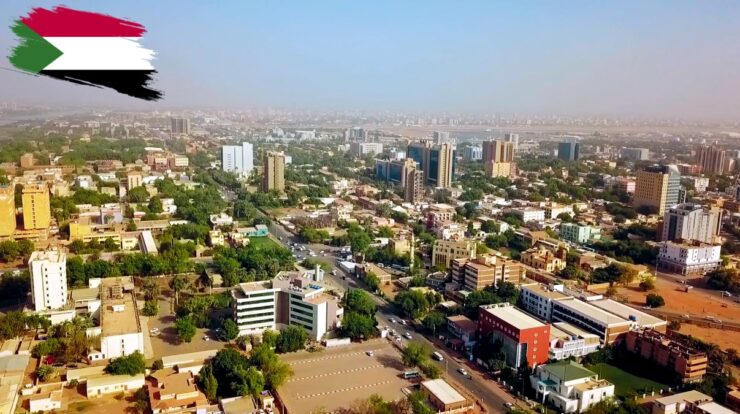
Sudan, one of the most corrupted countries, is a land of deserts, mountains, and the mighty Nile River, which splits the country between east and west.
Historically rich, Sudan has several pyramids and ancient temples, often overshadowed by its Egyptian neighbors. It’s a mosaic of cultures, with influences from both Africa and the Arab world.
Landmarks of significance include the Meroe Pyramids and the Red Sea’s diving sites.
14. Indonesia – 1,904,569 km²
Indonesia, the fourteenth largest country, is an archipelago of over 17,000 islands, including Java, Sumatra, and Bali.
Known for its diverse ecosystems, Indonesia boasts both tropical rainforests and active volcanoes. It’s a melting pot of cultures, languages, and cuisines. The nation is also the world’s largest producer of palm oil.
Famous spots include the Borobudur Temple and the Komodo National Park, home to the Komodo dragon.
13. Mexico – 1,964,375 km²

Mexico, ranking thirteenth, is a vibrant blend of ancient civilizations and modern urban centers. Its coasts touch both the Pacific Ocean and the Gulf of Mexico.
Famed for its spicy cuisine, colorful festivals, and rich history, Mexico is home to several ancient Mayan and Aztec ruins. Tequila, mariachi, and the Day of the Dead are among its cultural exports.
Notable landmarks include the pyramids of Teotihuacan and the seaside ruins of Tulum.
12. Saudi Arabia – 2,149,690 km²

Saudi Arabia, twelfth in line, is the largest country in the Middle East. Its vast deserts, like the Rub’ al Khali, are among the largest continuous sand deserts in the world.
Known as the birthplace of Islam, it houses the religion’s two holiest cities, Mecca and Medina. The nation is also a powerhouse in oil production, with vast reserves. The annual Hajj pilgrimage attracts millions of Muslims from around the world.
Landmarks of note include the Masjid al-Haram and the futuristic King Abdullah Petroleum Studies and Research Center.
11. Democratic Republic of the Congo – 2,344,858 km²
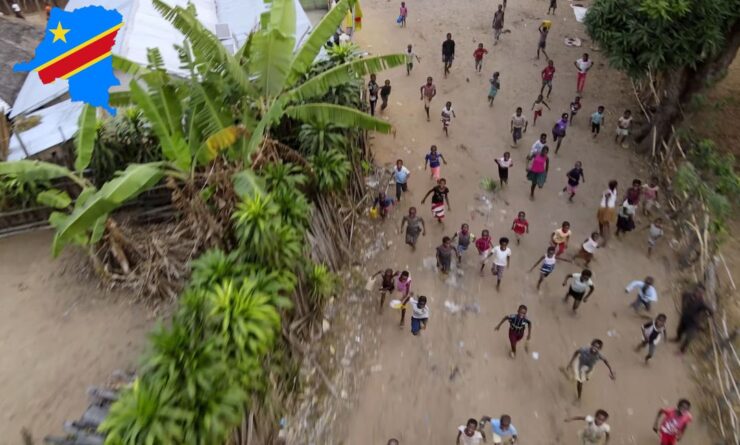
The Democratic Republic of the Congo (DRC) is the eleventh largest country globally. Nestled in the heart of Africa, it’s a land of dense rainforests and mighty rivers.
The DRC is renowned for its rich mineral resources, especially coltan and diamonds. The Congo River, Africa’s second-longest, winds its way through the country, providing both life and livelihood to its people. The country is also home to the endangered mountain gorillas, found in the Virunga National Park.
Famous landmarks include the Livingstone Falls and the active Nyiragongo Volcano.
10. Algeria – Spanning 2,381,741 km²

Tenth in line among the world’s vast expanses is Algeria. Holding the title as Africa’s largest nation, its vastness is awe-inspiring.
Predominantly recognized for its oil exports, Algeria is also home to the Sahara – the world’s most extensive hot desert. This desert blankets nearly 90% of the nation, leading the majority of its inhabitants to reside along the refreshing Mediterranean coast.
A treasure trove of history, Algeria boasts seven UNESCO World Heritage sites, with the ancient Roman city of Timgad being a notable mention.
Fun fact: Did you know that abortion is illegal in Algeria?
9. Kazakhstan – Covering 2,724,900 km²
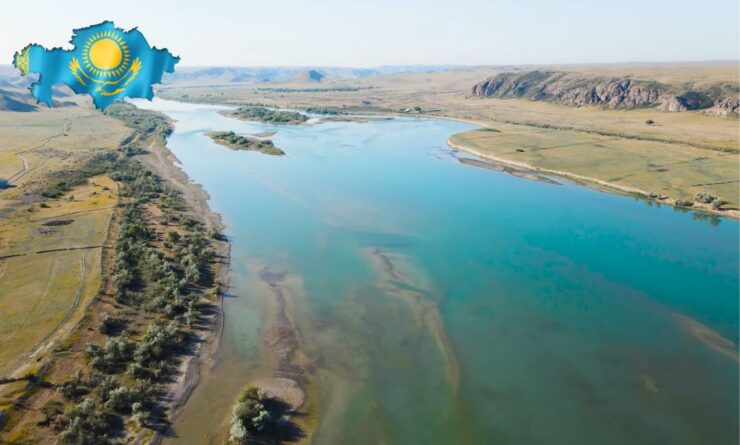
Kazakhstan, a gem in Central Asia, claims the ninth spot in terms of land area. To put its size into perspective, it’s akin to the entirety of Western Europe!
While it might not be a household name for many, Kazakhstan is a canvas of natural wonders, from majestic mountains to serene alpine lakes. The nation’s cultural tapestry is rich with horseriding traditions, and it’s also renowned for its oil reserves, skiing adventures, and the origin of apples.
A harmonious blend of 131 ethnic groups, including Kazakhs, Russians, Germans, Tatars, and Uyghurs, coexist in this safe and welcoming country.
8. Argentina – Stretching Across 2,780,400 km²
Securing the eighth position globally in terms of landmass, Argentina’s vastness can be visualized as a combination of Mexico and Texas. A quirky fact about Argentina is its cattle population, which outnumbers its human residents.
Argentina resonates with vibrant culture, being the birthplace of the sultry tango and a nation passionate about soccer. It’s also a haven for wine enthusiasts and carnivores, thanks to its renowned wines and beef.
The breathtaking Iguazu Falls, which Argentina shares with Brazil, consists of 275 individual cascades, earning it the title of the world’s most expansive broken waterfall.
The Andes houses the towering Aconcagua, which, at 6,961 meters, is not only the highest peak in the Americas but also the tallest outside Asia.
The globally recognized sportswear brand, Patagonia, derives its name from Argentina’s Patagonia region—a paradise for trekkers with its mountains, glaciers, and scenic trails.
7. India – Encompassing 3,287,590 km²
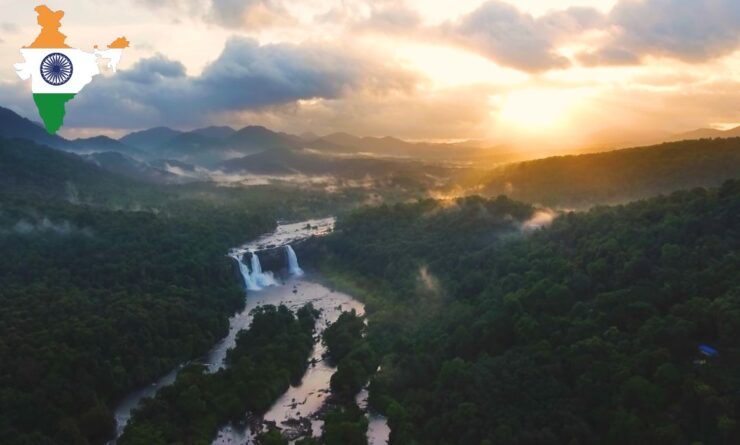
India, with its vast expanse, ranks seventh in the world but second in population. It’s poised to soon overtake China in terms of population, housing close to 1.4 billion souls.
India is a mosaic of traditions and flavors. It’s synonymous with yoga, the fervor of cricket, a rich culinary heritage, and an array of spices—contributing to nearly 70% of the global spice production.
The country’s diverse wildlife includes majestic tigers, rhinos, elephants, and the enigmatic cobras.
Iconic structures like the Taj Mahal and Jaipur’s Hawa Mahal stand testament to its rich history.
With 39 UNESCO World Heritage Sites, India is among the top 10 countries boasting such treasures.
6. Australia – Covering 7,692,024 km²

Australia, the world’s sixth-largest nation, is a vast expanse dominated by deserts in its central region. This has led over 90% of its inhabitants to reside along its picturesque coastlines.
Australia is synonymous with its stunning coastlines, pristine beaches, delectable wines, and iconic wildlife, including kangaroos and koalas. The rugged Outback, the mesmerizing Great Barrier Reef, and a plethora of national parks further define its natural beauty.
Notable landmarks include the architectural marvel, the Sydney Opera House, and the sacred Uluru rock formation.
Fun fact: Australia is home to many venomous snakes and other animals, keep your both eyes open if you encounter them.
5. Brazil – Spanning 8,515,767 km²
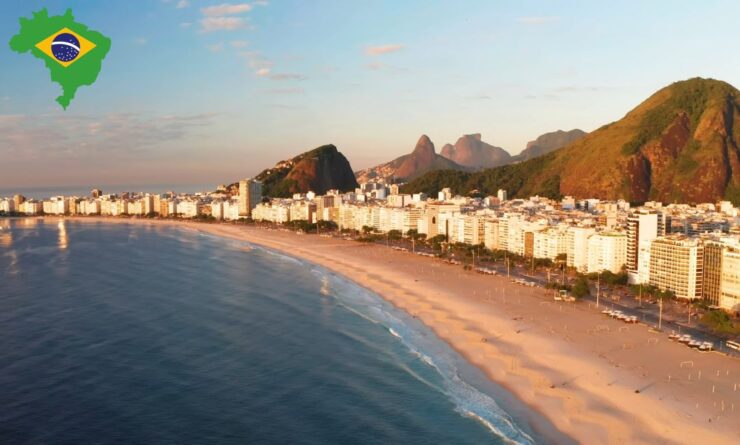
Claiming the fifth spot, Brazil is not only South America’s largest nation but also boasts a coastline stretching over 7,500 kilometers.
Brazil resonates with the rhythm of soccer, the allure of its beaches, the aroma of its coffee, and the vastness of the Amazon rainforest—the planet’s largest. Its rich biodiversity places it among the world’s 17 megadiverse nations. Iconic sites in Brazil include the majestic Iguazu Falls, the towering Sugarloaf Mountain, and the awe-inspiring Christ the Redeemer Statue in Rio de Janeiro.
4. China – Encompassing 9,706,961 km²

China, the world’s fourth-largest country, rivals the United States in terms of land area. Interestingly, while the continental USA spans four time zones, China operates within a single official time zone.
Home to over 1.4 billion people, China’s landmarks like the Forbidden City and the Great Wall are emblematic of its rich history. Nature enthusiasts can marvel at the surreal karsts of Guilin or the ethereal ‘Avatar’ mountains in Zhangjiajie.
China’s essence lies in its diverse cuisine, aromatic teas, profound culture, bustling cities, and unique wildlife, with pandas being a global favorite. Currently, it’s making waves with the world’s most rapidly expanding economy.
3. United States – Stretching Across 9,833,520 km²

The United States of America, with its vast expanse, claims the third spot among the world’s largest countries. Its diverse landscapes, spanning 3.8 million square miles, offer a plethora of natural wonders.
The U.S. is a land of contrasts, from its varied terrains that beckon adventurers for camping, hiking, and iconic road trips, to its cultural fabric that celebrates baseball, entrepreneurship, fast food, firearms, and the glitz of Hollywood. With the world’s leading economy, landmarks like the Statue of Liberty and the awe-inspiring Grand Canyon further define its grandeur.
Read our article on the largest countries in the USA by citizen population if you’re interested in expanding your knowledge.
2. Canada – Encompassing 9,984,670km²
Canada, with its vast territories, is the world’s second-largest country. To put its size into perspective, the UK could comfortably nestle within Canada over 40 times!
Canada’s essence is captured in its love for ice hockey, the sweetness of maple syrup, and the ethereal beauty of the northern lights. With a staggering 2 million lakes, it holds the record for the most lakes globally. Iconic natural wonders like the powerful Niagara Falls and the picturesque Banff National Park, with its crystal-clear lakes, further enhance its beauty.
1. Russia – Spanning a Massive 17,098,242 km²

Russia, a colossal nation, stands unrivaled as the world’s largest country. It stretches across 11 time zones, bridging two continents—Asia and Europe—and accounts for a tenth of the Earth’s land.
Russia’s identity is woven with elements like its iconic vodka, harsh winters, the addictive game of Tetris, and literary legends like Leo Tolstoy. St. Basil’s Cathedral in Moscow stands as a testament to its architectural splendor.
In terms of natural wonders, Russia is home to Lake Baikal, the world’s deepest lake, and boasts a fifth of the planet’s trees. Siberia’s city of Yakutsk holds the record as the world’s chilliest city, with temperatures plummeting to a bone-chilling −64.4 °C (−83.9 °F)!
Smallest Countries In World
| Rank | Country | Land Area (km²) |
|---|---|---|
| 10 | Grenada | 344 |
| 9 | Malta | 316 |
| 8 | Maldives | 298 |
| 7 | Saint Kitts and Nevis | 261 |
| 6 | Marshall Islands | 181 |
| 5 | Liechtenstein | 160 |
| 4 | San Marino | 61 |
| 3 | Tuvalu | 26 |
| 2 | Nauru | 21 |
| 1 | Monaco | 2.02 |
1. Monaco – Spanning Just 2.02 km²
Nestled on the French Riviera, Monaco is the epitome of luxury. As the world’s second-smallest country, it’s renowned for its casinos, Grand Prix, and as a tax haven.
The Monte Carlo district, with its opulent casino and the Prince’s Palace, showcases the grandeur of this tiny nation.
2. Nauru – Covering a Mere 21 km²
Nauru, a tiny island nation in the Pacific Ocean, holds the title as the world’s smallest independent republic. Despite its size, it boasts a rich phosphate mining history.
Its compactness means you can drive around the entire country in less than an hour! While small, Nauru’s charm lies in its serene beaches and the remnants of its phosphate mining past.
3. Tuvalu – Stretching Across 26 km²
Tuvalu, a Polynesian island nation, is a collection of nine atolls. Its name translates to “eight standing together,” referencing the eight inhabited islands.
While it’s one of the least visited countries globally, its pristine beaches and vibrant culture make it a hidden gem. Rising sea levels, due to climate change, pose a significant threat to its existence.
4. San Marino – Encompassing 61 km²
Perched atop the Apennine Mountains in Italy, San Marino claims to be the world’s oldest republic. Its historic center, with medieval fortifications and narrow lanes, is a UNESCO World Heritage site.
Despite its size, San Marino offers panoramic views of the surrounding Italian countryside from its lofty towers.
5. Liechtenstein – Covering 160 km²
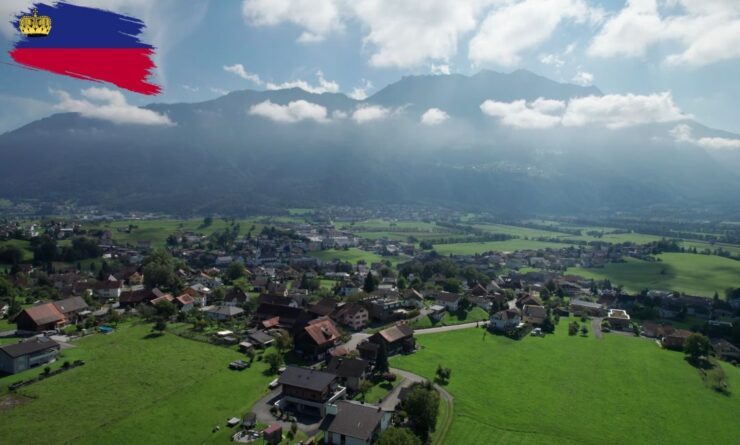
Sandwiched between Austria and Switzerland, Liechtenstein is a German-speaking alpine country. Known for its medieval castles, it’s also a hub for banking and finance.
The Vaduz Castle, overlooking the capital city, is the residence of the reigning prince and a symbol of the nation’s heritage.
6. Marshall Islands – Spanning 181 km²
Located in the Pacific Ocean, the Marshall Islands comprise 29 atolls and five islands. Its Bikini Atoll became infamous for US nuclear testing during the Cold War.
The islands are a haven for divers, with shipwrecks and vibrant marine life awaiting exploration.
7. Saint Kitts and Nevis – Stretching Across 261 km²
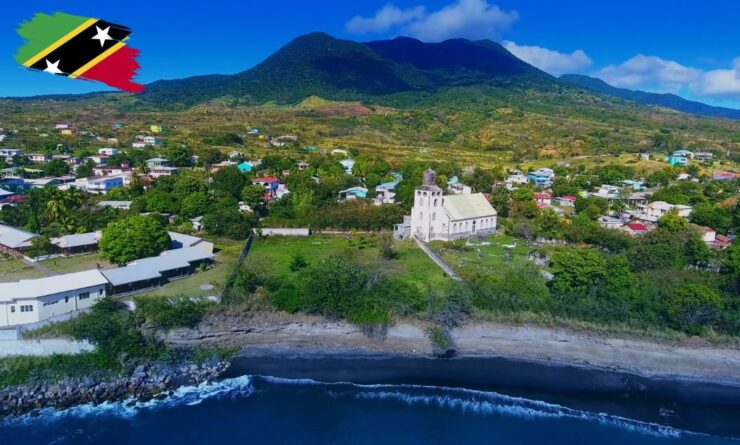
This Caribbean nation, consisting of two islands, is known for its mountains, beaches, and sugar cane fields. The Brimstone Hill Fortress, a well-preserved colonial-era military fort, stands as a testament to its history.
Its vibrant festivals, like the St. Kitts Music Festival, attract visitors from around the globe.
8. Maldives – Encompassing 298 km²
The Maldives, a tropical paradise in the Indian Ocean, is a collection of 26 atolls. Known for its luxury resorts and overwater bungalows, it’s a favorite honeymoon destination.
Its crystal-clear waters, rich marine life, and coral reefs make it a diver’s dream.
9. Malta – Covering 316 km²
Situated in the Mediterranean, Malta is an archipelago with a rich history spanning 7,000 years. Its capital, Valletta, is a UNESCO World Heritage site, known for its museums, palaces, and grand churches.
From the prehistoric Ħaġar Qim temples to the Blue Lagoon in Comino, Malta offers a blend of history and natural beauty.
10. Grenada – Spanning 344 km²
Located in the Caribbean, Grenada, also known as the “Island of Spice,” is famous for its nutmeg and mace production. Its lush rainforests, waterfalls, and pristine beaches make it a tropical paradise.
The underwater sculpture park in Molinere Bay and the historic Fort George are among its top attractions.
Biggest Countries By Population
| Rank | Country | Population (2024) |
|---|---|---|
| 10 | Mexico | 128 million |
| 9 | Russia | 145 million |
| 8 | Bangladesh | 164 million |
| 7 | Nigeria | 206 million |
| 6 | Brazil | 212 million |
| 5 | Pakistan | 220 million |
| 4 | Indonesia | 273 million |
| 3 | United States | 331 million |
| 2 | India | 1.38 billion |
| 1 | China | 1.44 billion |
China – 1.44 billion Currently, China holds the title as the planet’s most populated nation with 1.44 billion inhabitants. Yet, projections suggest a decrease to 1.4 billion by 2050, positioning it behind India.
India – 1.38 billion India, with its 1.38 billion residents, ranks second in global population. By 2050, it’s anticipated to surge to 1.64 billion, surpassing China.
United States – 331 million The USA stands third with a population of 331 million. This figure is projected to rise to 380 million by 2050. Notable urban centers include New York City, Los Angeles, and Chicago.
Indonesia – 273 million With 273 million people, Indonesia is the fourth most populated country. Estimates show a growth to 330 million by 2050. Jakarta and Surabaya are its primary cities.
Pakistan – 220 million Pakistan, home to 220 million individuals, is fifth on the list. The population is expected to reach 338 million by 2050, with Karachi and Lahore being major cities.
Brazil – 212 million Brazil, with its 212 million residents, is the sixth most populated nation. By 2050, this number is predicted to increase to 228 million. Sao Paulo and Rio de Janeiro are among its largest cities.
Nigeria – 206 million Nigeria, with a population of 206 million, ranks seventh. Astonishingly, it’s projected to double to 400 million by 2050, making it the third most populated globally. Lagos, Kano, and Ibadan are key urban centers.
Bangladesh – 164 million Bangladesh, housing 164 million people, stands eighth. The population is set to grow to 192 million by 2050. Dhaka and Chittagong are its major cities.
Russia – 145 million Russia, with 145 million residents, is the ninth most populated country. However, it’s expected to decrease to 135 million by 2050. Moscow and Saint Petersburg are its primary urban hubs.
Mexico – 128 million Rounding off the top ten, Mexico has 128 million inhabitants. This figure is projected to rise to 155 million by 2050. Mexico City, its capital, is also North America’s most populated city.
FAQs
Which Island is the Largest in the World?
Greenland holds the title as the world’s largest island. While it’s a part of Denmark’s territories, it isn’t recognized as an independent nation. Following Greenland, New Guinea comes in second, divided between Indonesia and Papua New Guinea. Borneo ranks third, shared by three nations: Brunei, Indonesia, and Malaysia.
Which Island Boasts the Highest Population?
Java, located in Indonesia, is the world’s most populated island. As of 2021, it’s home to approximately 148 million residents.
Which Continent is the Most Expansive?
Asia stands out as the world’s largest continent, both in land area and population count. By 2024, it’s estimated that over 4.7 billion people reside in Asia, spread across more than 31 million square kilometers (or nearly 12 million square miles).
Which Country Owns Greenland?
Greenland, the world’s largest island, is a territory of Denmark.
How Many Countries Share the Island of Borneo?
Borneo, the third-largest island globally, is divided among three countries: Brunei, Indonesia, and Malaysia.
Which Continent Has the Highest Population Density?
Asia, being the largest continent, also has the highest population density, with billions calling it home.
Are There Any Other Islands Split Between Multiple Countries?
Yes, besides New Guinea and Borneo, the island of Hispaniola in the Caribbean is split between two countries: Haiti and the Dominican Republic.
Final Words
Our planet is a vast tapestry of nations, each with its unique charm, history, and significance. From the colossal expanses of Russia and Canada to the tiny yet vibrant territories of Monaco and Nauru, every country tells a story.
The sheer diversity in size, culture, and population is what makes our world so intriguing and worth exploring. Whether you’re a seasoned traveler or a curious reader, I hope this piece has added a few destinations to your bucket list and broadened your geographical horizons. Here’s to the endless adventures that await us on this beautiful blue planet!

